Inside Tracks #3: Ned Doheny "Get It Up For Love," 1976 + Covers by Stephen Michael Schwartz & Johnny Rivers (1974) & David Cassidy (1975)-EXCLUSIVE INTERVIEWS
A little housekeeping, first, as we change what the internet knows about who recorded this song, and when. Don't worry, we brought the receipts!
For “Inside Tracks,” we put a couple of cover versions under the audio microscope, and compare and contrast them to the songwriter’s original version. How similar or dissimilar are they? What did the songwriter intend with the original, and how were the featured covers crafted?
This third “Inside Tracks” takes a peek at three covers, all recorded not only within a year of each other, but well before the songwriter, himself, slapped it onto vinyl!
For “Inside Tracks #1,” we uncovered Tim Moore’s ballad, “Second Avenue,” diving into covers by Art Garfunkel and Colin Blunstone, accessible by clicking on this sentence. “Inside Tracks #2” featured another Tim Moore song, “Rock and Roll Love Letter,” and two particular covers. You can find it here:
The Web is Provably Wrong! Front Row & Backstage Has the Receipts!
What we couldn’t have imagined, here at FR&B Central, is that “Inside Tracks” would one day prove that what the internet “knows” is certifiably wrong, at least in this case!
We’ve got photos, an audio recording, and the lived memories and testimonies of the principles involved as proof! Now, let’s see just how quickly the massive boulders of Internet info can be moved into correct and reliable position!
Exhibit A: Wikipedia, In Its Finite Wisdom
Wikipedia incorrectly states, on its page for original composer, Ned Doheny (and his second solo album, but first for Columbia Records, Hard Candy), that “‘Get It Up for Love,” was originally recorded in 1975 by David Cassidy on his RCA album The Higher They Climb and released by Cassidy as a single.”
All of those words are correct, except for the “originally recorded” part! In fact, David was actually third in line to record and release a vinyl interpretation of “Get It Up For Love,” and we’ve got him recorded, on audio tape (now digitalized), revealing exactly that fact!
Forensics: Audio Proof of Song Timeline
Thanks to podcaster, Louise Poynton (author of Cherish: David Cassidy-A Legacy of Love), I was re-united with my long-lost digital audio (transferred from the original reel-to-reel tape) of my 1975 interview with Cassidy. The last 32 minutes or so of Louise’s recent interview with this reporter (pink Spotify box just below) includes the audio of that rare May 1975 interview atop a downtown Houston hotel.
In it, someone asks David about recording “Get It Up For Love.” In his reply, David asked about “the guy with three names” who also recorded the song on RCA a few months before. Being in radio at the time, I had promo copies, long before, of Stephen’s album and single.
I blurted out the name of “the guy with three names,” Stephen Michael Schwartz, and David sounded suddenly reminded. Also audible is my informing David that Johnny Rivers had also recorded the song (a promo single I also owned at the time).
David sounded unaware of Rivers’ version, and even a bit incredulous. I’d have brought my copy if I’d-a known it’d come up!
Exhibit B: The Website That Got it Right
According to SecondHandSongs.com, Stephen Michael Schwartz was the first to record “Get It Up For Love,” even tagging it as such with the “First release” phrase, with his August 1974 release date (like Cassidy the following year, for RCA Records).
They erroneously list Cassidy as second, but indeed, Johnny Rivers was second to record the song (as my May 1975 interview with Cassidy indisputably proved), with his cover on Atlantic Records, released in fall or early winter, 1974 (not 1976, as the website asserts), in between the first Schwartz version of August 1974, and Cassidy’s 1975 cover. Submitted for your approval (see publishing date at label bottom):
A San Francisco rockin’ funk band, The Fabulous Rhinestones, recorded a cover for 20th Century Records in 1975, before disbanding weeks, if not moments, thereafter.
Interestingly enough, Nigel Olsson also recorded and released his arrangement in 1975 for his self-titled debut solo album for Rocket/MCA Records, Elton John’s label. In fact, drummer Nigel, and bassist, Dee Murray, had just been fired by Elton after five years as his reliable recording and touring rhythm section!
In spring/early summer of 1975, Stephen Michael Schwartz was in the process of recording his second RCA album (with David Foster providing musical direction…read about it here, in Stephen’s own words)….
…..and Stephen had hired Nigel and Dee to play on it, in what likely was their first post-Elton session gig (after wrapping the recording of his Captain Fantastic and the Brown Dirt Cowboy album):
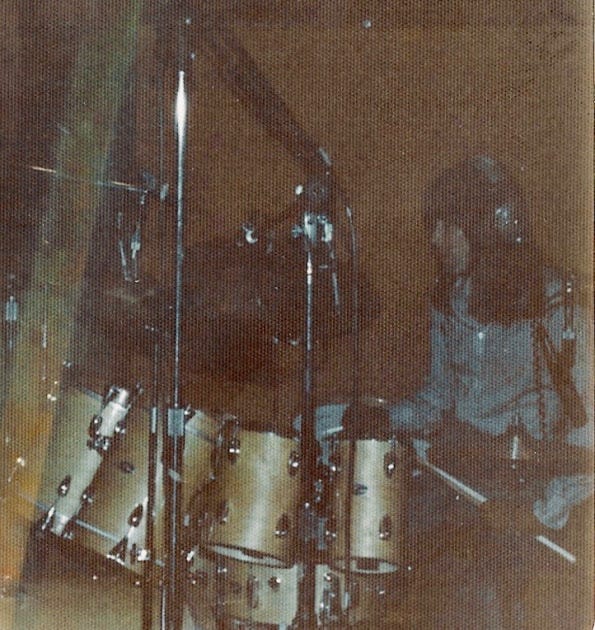
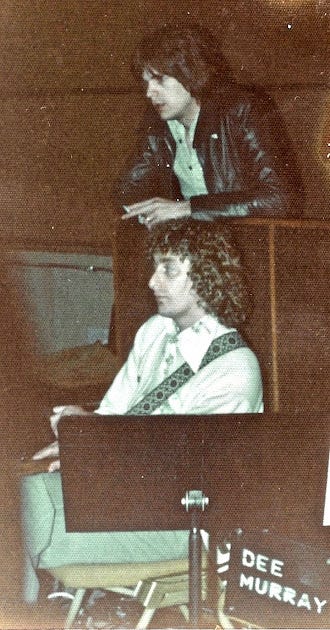
Now That the Housekeeping is Behind Us…the Music!
Normally, we’d begin with the songwriter’s version, usually the first time the song is committed to tape. But, as we’ve seen, the composer, Ned Doheny, was the seventh artist to record “Get It Up For Love” (after--in order-- Schwartz, Rivers, Cassidy, Rhinestones, Olsson, and something called Springbok (appearing to be a rock, Ray Conniff-like re-creation outfit covering international hits of the day)!
Stephen Michael Schwartz, “Get It Up For Love,” RCA Records: The First Recorded Version
As the first, Stephen’s arrangement became the template for everyone who followed, regardless of how differently or similarly they were arranged. But, how did Stephen first hear it, if no one had yet recorded it?
Stephen, who has been a valued and exclusive content creator for Front Row & Backstage since February, recalls the prep work needed for his 1974 album:
“Producer David Kershenbaum was sensitive but pragmatic about the need for ‘hit songs.’ He asked if I was open to meeting with publishers to hear outside material in search of songs that had radio appeal as well as songs that fit my musical sensibilities.”
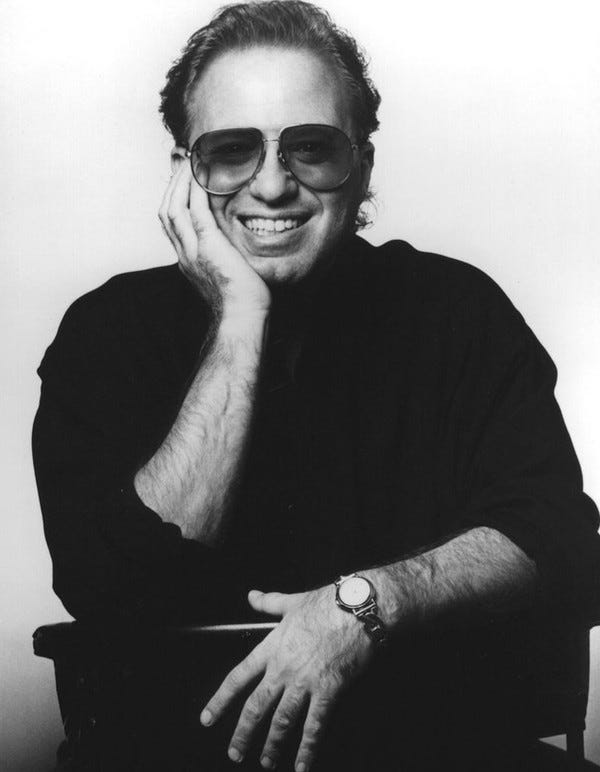
“It had never occurred to me I would be singing other people’s songs on my record, but I agreed, and we went to meet several top publishers in town, like Warners, Motown, Screen-Gems/EMI, one or two more, to find the right songs which would fill out the open slots needed for ‘outside’ [cover] songs. Warners had the best writers, and if memory serves, is where we got ‘Get It Up For Love.’
“In those days, you would sit in a publisher’s office, after his hearing your musical needs, and he would pitch maybe eight or ten of his best ‘radio’ songs. If you liked them, he’d give you the demo on a vinyl acetate (one-sided record) with the sheet music to take with you.
“These were songs (on the acetates), many that had not been recorded yet, and some were not even fully-produced. You had to use your imagination: How would I sound singing this? I still have some of those acetates. They are collectors items, for sure!
“Some of the songs I was pitched were by Van Morrison (one of my favorite artists), Kenny Loggins, Neil Diamond, Jackson Browne, Severin Browne (Jackson’s brother), Ned Doheny, Don Henley and Daniel Moore.”
Acetates: A Primer
Acetates aka “lacquers” (according to Rarerecords.net) are lacquer-coated aluminum discs cut one-at-a-time by a lathe from a live performance or magnetic tape. A labor-intensive process, they are not pressed out of plastic using mechanical stampers, as are commercial records.
They sound wonderful, but are two- to three-times heavier than a standard LP, and are only “good” for maybe a dozen repeated plays before the surface wears noticeably.
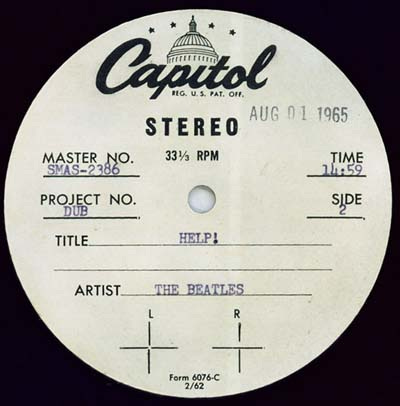
Stephen’s cover of “Get It Up For Love” was arranged by veteran session guitar player (and member of The Crusaders and Fourplay), Larry Carlton, who has four Grammys to his name.
Schwartz delivers a strong and confident vocal (with clever ad-libs that belie his 20 years) over a suitably funky, but unobtrusive Carlton arrangement. Electric piano and tasty guitar play along a smooth string bed (Sid Sharp, directing) that comes in at the chorus. Background vocalists include longtime pros Shirlie Matthews, Clydie King, Kim Carnes, and Vanetta Fields.
Johnny Rivers, Later in 1974, Atlantic Records
The 32-year-old, with a record co-produced with Joe Sidore, delivers as soulful a version as you’d expect from the artist who’s recorded Motown standards like “It’s the Same Old Song,” “Baby, I Need Your Lovin’” and “The Tracks of My Tears.”
Rivers co-arranged the song with Tom Sellers, who was in Philly band, Gulliver, with singer/songwriters, Tim Moore and Daryl Hall in 1970. Hall, of course, would eventually join forces with John Oates to form a prodigious hit-making duo. Starting off with an acoustic guitar, a unique and effective electric guitar figure winds its way through Rivers’ version.
David Cassidy, 1975, RCA Records

Produced by David and the Beach Boys’ Bruce Johnston (whose 1964 Bruce & Terry duo was featured recently on a “GROW BIGGER EARS” Summer Power Pop Playlist), Cassidy’s cover is quick-tempoed (Allmusic.com calls it a “pulsating urgency”), and almost distractingly string-laden. Propelled by acoustic guitar and percussion, David uses his distinctive voice to lift his cover above many others’.
Songwriter Ned Doheny, 1976, Columbia Records
Far more languid than any of the previous covers, Doheny (on his Steve Cropper-produced track) adopts a typically soft rock/acoustic reading (for him, especially considering his background of playing alongside SoCal mainstays Jackson Browne, The Eagles, J.D. Souther, Linda Ronstadt), with just a wink of the funk most of the dozen+ cover artists have injected into it over the nearly 5 decades.
He wrote it (likely late 1973/early ‘74) while still with David Geffen’s Asylum Records (and their Benchmark Publishing), for whom he released his self-titled debut in 1972. “Doheny possesses a high, almost frail tenor that is somewhat reminiscent of a Todd Rundgren without the hysteria,” asserts Numerogroup.com, oddly.
“He phrases like a cool jazz man,” Numerogroup continues, more reasonably, “seldom using his voice other than as the leading line above a tightly-coordinated instrumental texture.”
More from Numerogroup: “Following Benchmark Music’s sale to Warner Communications [as Stephen correctly recalled], Doheny compositions were being flogged by a series of song pluggers.
“Warner’s Artie Wayne was assigned to Ned’s case in 1974. When the ‘A Love Of Your Own’ demo hit his desk, Wayne had already sold a spectrum of performers on Ned’s versatile ‘Get It Up For Love.’
“It got a lush acoustic guitar lead from broken-winged Partridge ex-pat, David Cassidy, distinctive electric guitar klaxons from rock stalwart Johnny Rivers, and studio bombast and a Kim Carnes vocal from Troubadour also-ran, Stephen Michael Schwartz.” [Stephen played the Troubadour as a teenager many times in the early ‘70s, upon moving with his family to L.A.’s San Fernando Valley from Victorville, CA.]
“On the suggestive song’s upbringing, Ned said, ‘The first time I played ‘Get It Up For Love’ was at the Troubadour. David Geffen was in the audience, and as soon I got to the chorus, his head whipped around. I suspect he thought my choice of words showed a want of good taste.
“‘And most of my brethren at Asylum probably thought it was a cheap shot.’ But for Doheny, the entendre was at least double. ‘I was talking about summoning your resources and getting your shit together. You could just as easily say, ‘Get it up for life,’ but you’d sound like a moron. ‘Get it up for love’ makes it a little more…seminal.”






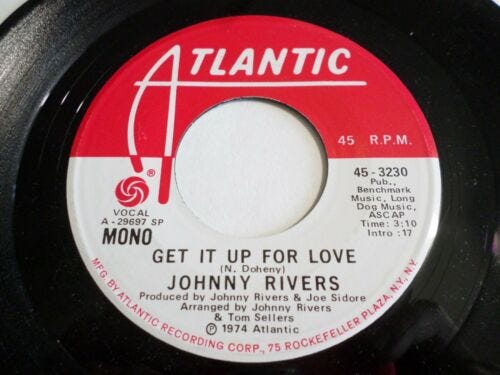
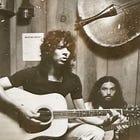

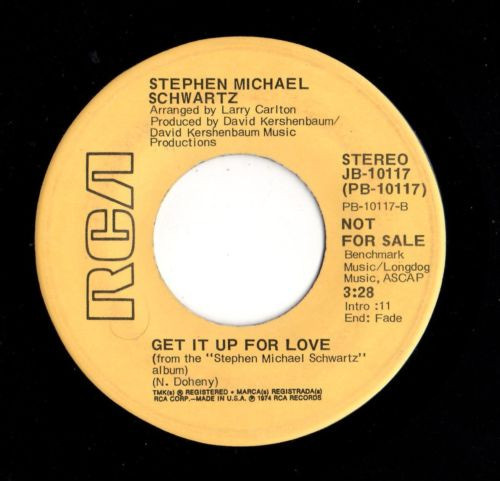

Brad, Thank you for another great article and, like debunking the fake moon landing, dispelled the myth as to who's version of "Get It Up For Love" was first to hit lbe recorded. In all seriousness your research was wonderful and I listened to each of the selected version you put up. I had never heard Johnny Rivers' version before. I have a feeling Johnny heard my version and liked the string arrangement so much he used it on his version. That's a compliment to Larry Carlton's arrangement on my version. Really your whole "Inside Track" article is a compliment to Ned Doheny's great song. Through solid journalistic measures the truth has been revealed. Did I win anything than than your admiration?
Great backstories and inside looks at an interesting period in music history, as always!!